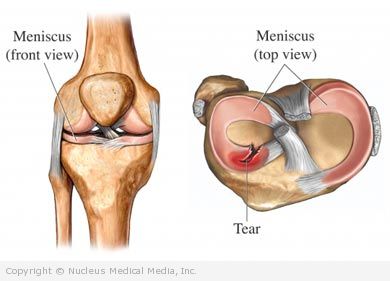Osgood-Schlatter Disease
Osgood-Schlatter Disease – Definition
Osgood-Schlatter disease is inflammation of the bone and surrounding soft tissue just below the knee. It occurs at the point where the tibia (shinbone) attaches to the tendon of the kneecap (patellar tendon).
Osgood-Schlatter Disease – Causes
Osgood-Schlatter disease is caused by repeated tension or stress on the upper part of the shinbone during its growth spurts.
Osgood-Schlatter Disease – Risk Factors
A risk factor is something that increases your chance of getting a disease or condition.
- Sex: males are at greater risk than females
- Age: 10 to 18 years old
- Rapid growth spurts
- Activities that stress the patellar tendon, such as jogging, jumping, and sudden turning
- Being overweight
Osgood-Schlatter Disease – Symptoms
Symptoms include:
- Pain, swelling, and/or tenderness just below the knee that usually worsens during physical activity
- A swollen, painful bump just below the knee that is sensitive to touch
Osgood-Schlatter Disease – Diagnosis
The doctor will ask about your symptoms, medical history, and physical activity, and examine your knee. Diagnosis is based on the symptoms. In some cases, you may have an x-ray or an ultrasound of the knee.
Osgood-Schlatter Disease – Treatment
Osgood-Schlatter disease may go away once the bones and tendons have finished growing.
Treatment may include:
Limited Exercise
- Avoid exercise that stresses the patellar tendon until the swelling and pain go away. This may be as short as 1 to 2 weeks, or as long as three months or more.
- Once the swelling and pain subside, limit those same activities to help prevent recurrence.
- Sometimes it may be possible to resume more vigorous exercise while wearing an elastic pressure bandage (ie, Ace) or a knee brace.
Pain Relief
- Apply ice to relieve swelling and pain:
- During a flare-up
- After exercise to prevent recurrence of flare-ups
- Use one of the following drugs to help reduce inflammation and pain:
- Ibuprofen (Motrin, Advil)
- Naproxen (Aleve, Naprosyn)
- Acetaminophen (Tylenol)
- Aspirin
- Note : Aspirin is not recommended for children or teens with a current or recent viral infection. This is because of the risk of Reye’s syndrome. Ask your doctor which other medicines are safe for your child.
- In severe cases, local injection of cortisone can reduce inflammation and pain.
Surgery
If the patellar tendon has pulled away from the shinbone, surgery may be needed to repair the tendon and remove fragments of bone. In most cases, surgery is not needed.
Osgood-Schlatter Disease – Prevention
To prevent the occurrence or recurrence of Osgood-Schlatter disease:
- Encourage overweight children to lose weight.
- Encourage susceptible children to exercise regularly but moderately, and to avoid weight-bearing activities that put excessive stress on the patellar tendon. These include jogging, jumping, and sudden turning.
- Ask your child’s doctor for stretching and strengthening exercises for the shinbone/patellar tendon.

